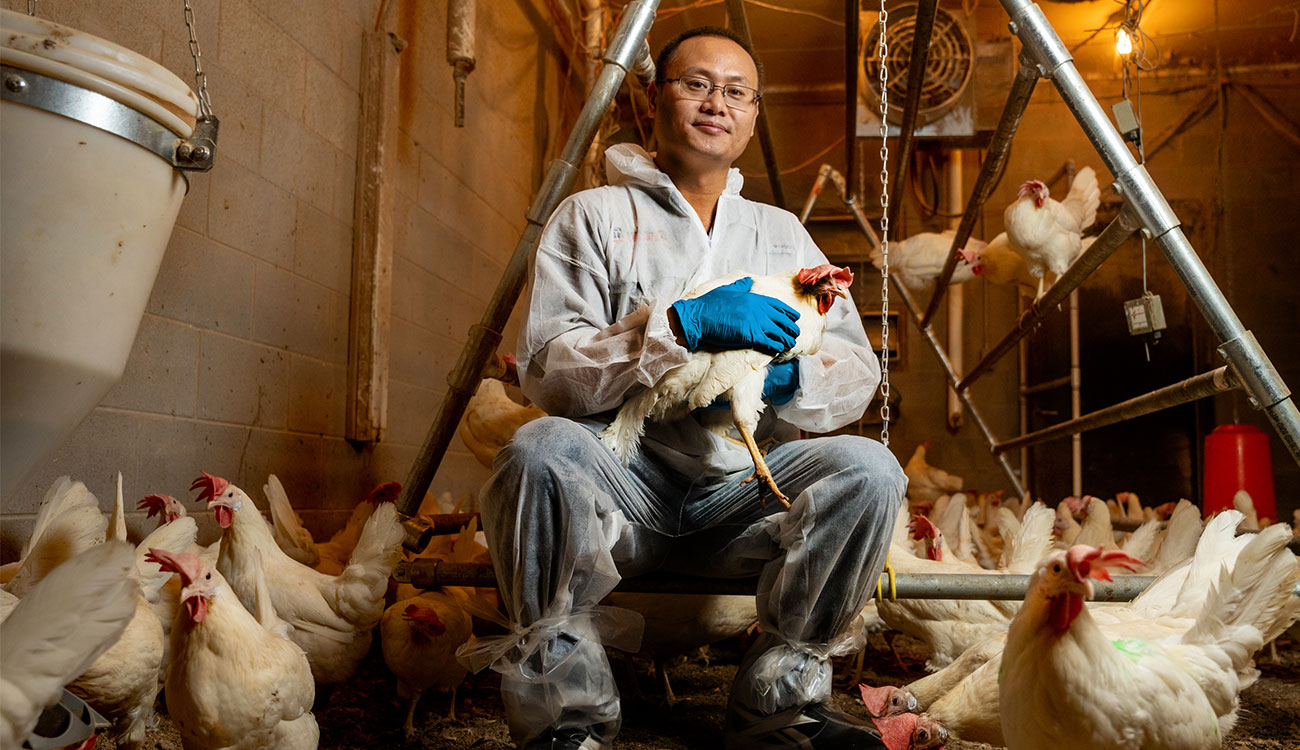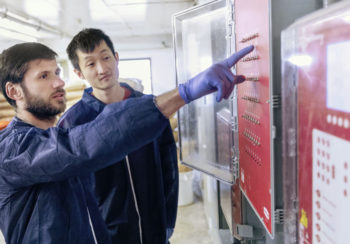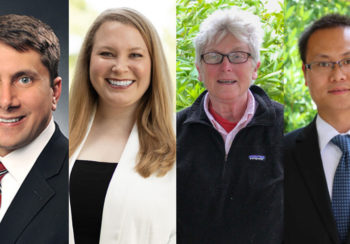Cage free.
The term seems self-explanatory enough. Step inside a cage-free poultry house, and the reality is not far detached from the perception. A soft bed of wood shavings or sand litters the ground. Step carefully, as it’s likely you’ll find an egg or two scattered randomly underfoot. And there are chickens everywhere, freely roaming like a crowd at a flea market.
Cage-free poultry systems—indoor aviaries that house colonies of up to thousands of birds—offer an improved level of animal welfare for egg-laying hens. They are free to walk, scratch, forage, spread their wings, and perch—all vital natural behaviors.
Still, “cage free” is not as simple as the name suggests. An egg that comes from an uncaged laying hen may not be materially nor nutritionally different from one laid in conventional cages. Cage-free poultry farming is not more efficient, cost-effective, nor even safer than conventional caged production. But it’s likely to be the future of poultry farming.
According to United Egg Producers, the cage-free egg market will reach 70% by 2030, however there are significant challenges to that prediction. The economics of transitioning to cage-free systems are daunting. Increased labor costs make it more expensive to operate cage-free poultry farms, a cost then passed on to consumers. And cage-free systems come with their own welfare concerns, ranging from air quality and floor-litter management to hens laying their eggs on the aviary floor or demonstrating adverse behaviors such as aggressively pecking other hens.
“It will cost about $10 billion for all producers to make the transition,” said Lilong Chai, associate professor of poultry science at the University of Georgia College of Agricultural & Environmental Sciences (CAES) and a leading figure in precision poultry research. “Our research goal is promoting cage-free welfare management for laying hens, egg safety, and environmental sustainability toward climate-smart egg production.”
CAES researchers like Chai are leading those meaningful steps toward more efficient, safe, and eventually cost-effective poultry production.
Bringing technology into the coop
There’s a balance that must be struck between the welfare of the birds and the economics of the industry.
“That’s where we are right now,” said Claudia Dunkley, public service associate in poultry science for UGA Extension on the Tifton campus. “Overall, it’s not economically as competitive when you compare it to the caged systems. It’s cheaper to run those than commercial aviary systems.”
These are the challenges that UGA researchers are addressing via precision poultry farming technologies. By integrating computer vision and robotics, their research is leading to impactful transformation.
Precision poultry farming uses advanced sensing technologies for real-time data collection, analysis, and interpretation to improve production, reproduction, animal welfare, food safety and quality, and sustainability. It attends to the health and well-being of the poultry, acknowledging that healthier and less stressed hens yield more quality eggs. Machine vision technology, blending sensors and cameras with learning algorithms to interpret behavior from visual data, allows for subtle observations of poultry behavior and physiology, enhancing early detection capabilities while remaining non-invasive and maintaining biosecurity.
Chai’s research also addresses air quality in cage-free aviaries and mitigation of birds’ behavioral issues, including aggression and laying eggs on the floor instead of in the nesting areas.
“We have tested thermal imaging technologies for monitoring heat stress of cage-free hens in commercial cage-free houses,” Chai said. “We plan to implement our machine vision system for monitoring cage-free laying hen houses.”
Cage-free systems, to be sure, are no panacea for the birds’ welfare—they have their own challenges. Air quality overall is a major concern for both birds and laborers, as the free-moving animals stir up dust on the litter floors. And more social birds are also more susceptible to contagions.

“The number one concern is avian influenza outbreak,” said Chai, noting the largest outbreak in U.S. history in 2022 that caused egg prices to more than double.
Chai’s research investigates ways to mitigate the dust generation. Use of electrostatic particle ionization (EPI), for example, improves air quality by charging particles in the air. The EPI system emits negative ions from a pipe suspended in the aviary. The negative ions naturally attract and surround particles in the air, in turn making them more likely to be attracted to grounded or positively charged surfaces. This magnet-like effect causes the particles to stick together and adhere to any surface they encounter
“The particulate matter concentrations are very high; that is hurting the health of animals and the farm workers,” Chai said, citing research from his previous lab at Iowa State that monitored dust concentration nine times higher in cage-free systems versus conventional cages. “There’s a big challenge.”
Chai said that by adjusting the litter bedding material and using an electrostatic charging system, they can reduce dust by 70% compared to the conventional cage system.
Said Dunkley: “We’ve been successful looking at some of the emissions that occur from the houses themselves and ways they can reduce emissions, like greenhouse gases in the poultry production houses.”
‘Birds lay eggs everywhere’
In conventional caging, birds’ eggs automatically go to an egg collection and transportation system. In cage-free systems, however, hens often opt to lay their eggs directly on the floor instead of in nesting areas. Some farmers report up to 10% of eggs can be laid on the floor, which—in a colony producing a million eggs in a day—means 100,000 of them must be collected manually.
It’s not a tenable situation.
Chai aims to reduce the number of floor eggs, as well as the amount of time eggs spend on the floor, which can affect their value.
“Birds lay eggs everywhere,” said Chai, noting this increases costs to producers because it leads to higher rates of contamination with harmful bacteria. In addition, floor eggs are not considered table eggs for direct sale and have a higher chance of getting broken and eaten by the hens.
“If the egg is not tracked and the issue not addressed in a timely manner, an egg could be buried by the birds in thick litter,” Chai said. “If the farm staff cannot find an egg in a couple of days, you never know if it is found like three weeks later and maybe is not healthy to eat. The farmer cannot tell if that is fresh from today or from a month ago.”
Additional studies by Chai’s lab investigates ways to detect floor eggs using computer vision and machine learning, which combined can be used to develop a robotic egg-retrieval system. The technology also can monitor laying hens’ behavior to try to determine why hens lay eggs in certain locations.
“Is it light intensity or light quality?” Chai said. “Environmental factors can affect mislaid floor eggs. If we can identify the reasons, we can suggest farmers to improve the management. For example, the birds like to lay eggs beneath the aviary system because that place has a low light intensity; we can increase the light intensity beneath the aviary system. Some Iowa farmers reduced floor eggs by 50% to 60% using this method.”
Quality of the litter is another contributing factor.
“If the litter is too deep and soft, especially close to the corner of the house, we may suggest farmers manually adjust litter depths as that could be a natural spot for the bird to nest,” Chai said.
If farmers can keep eggs from collecting on the floor, it could help avoid ingraining laying habits among the hens.
“Because mislaying is a learned behavior,” Chai said. “If they see eggs on some spots, they may think that’s maybe a nest spot.”
Conversely, Chai’s students have found that some hens refuse to lay eggs on the floor, waiting patiently for available space in nesting boxes.
“We can track those birds and use that for future breeding birds,” Chai said. “Offspring from these birds may not lay eggs on the floor.”
Chai’s work also helps determine the optimal size and design of cage-free systems.
“Theoretically a larger space is better, but we don’t want producers to invest too much on that,” Chai said. “So that is our research project currently. We still don’t know which space is best in terms of production efficiency, mislaying reduction, and cost.”
“We’ve been successful looking at some of the emissions that occur from the houses themselves and ways they can reduce emissions, like greenhouse gases in the poultry production houses.”
– Claudia Dunkley, public service associate in Poultry Science,
UGA Extension
Pecking order
Understanding bird behavior is another element to building better systems. Large flocks in cage-free aviaries have behavioral issues that aren’t as pronounced in caged systems.
“You’ve heard of ‘pecking order,’ right? It comes from birds,” Dunkley said. “There is a pecking order there, and the more aggressive birds are going to be the ones on the floor.”
In conventional cages, a less aggressive bird can hide in a corner so other birds sharing the cage can’t reach the hen’s back.
“But in the cage-free system,” Chai said, “when one bird is pecked by other birds, the other birds will attack the bird very quickly.”
Chai’s lab uses machine vision to monitor and track these unhealthy or problematic behaviors.
“Pecking is natural. Birds have a nature to peck on the root, on the tree, to find food. That’s a natural behavior we don’t want to stop 100%,” Chai said. “But we don’t want the bird to peck other birds. If we can detect the pecking of a bird quickly, we can provide treatment and reduce the farm’s cost.”
Researchers also experiment with adding enrichments to the aviary such as pecking stones that give birds an outlet to exhibit the behavior without being aggressive to their roommates.
“We want to figure out how many enrichments or which kind of material is best,” Chai said. “Should you provide a natural stone or use a woodblock? Or we can use a block made from grain, like barley or soybean, so after pecking the birds get some incentives. They can eat the grain material like corn as well.”
It’s an ongoing challenge to enhance productivity as the world’s consumption of poultry products keeps increasing and the poultry industry must keep up with rising demand.
“There are still a lot of other behavior we still don’t understand,” Chai said. “We don’t know the answers yet.”
This work was supported by the U.S. Department of Agriculture National Institute of Food & Agriculture (USDA/NIFA) under Award 2023-68008-39853 (PI: Lilong Chai; Co-PIs: Casey Ritz, Woo Kim, Harshavardhan Thippareddi, and Claudia Dunkley). Any opinions, findings, conclusions, or recommendations expressed in this publication are those of the author(s) and should not be construed to represent any official USDA or U.S. Government determination or policy. The work also is supported by the Georgia Research Alliance, Egg Industry Center, and the UGA Institute for Integrative Precision Agriculture.






